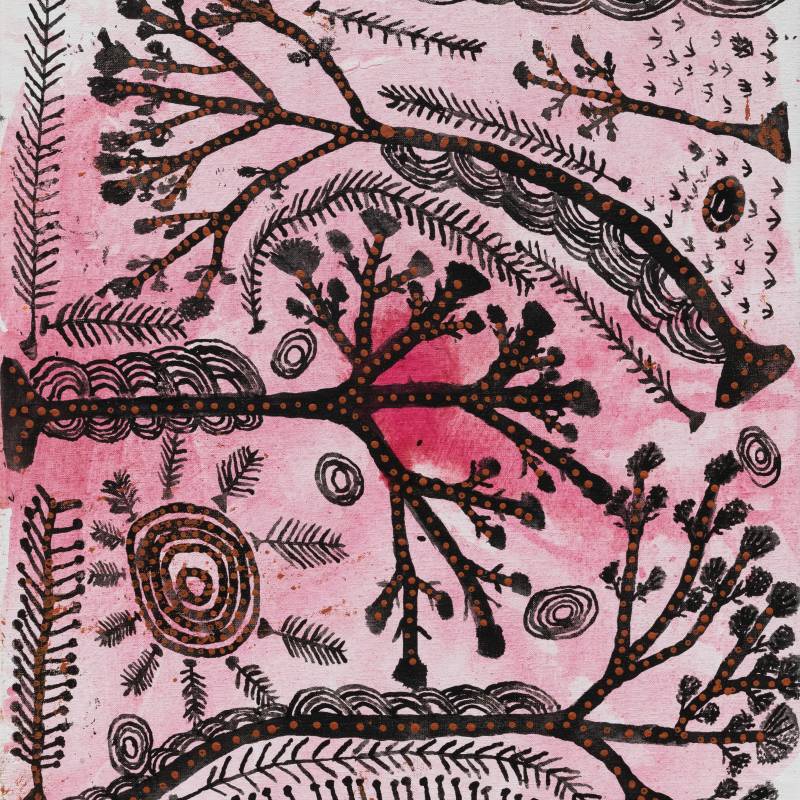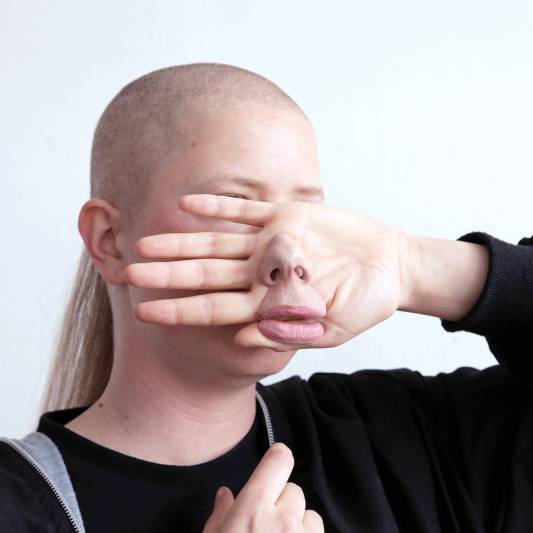Cool Hunter Predictions: Jenna Lee
The artists to watch in the year ahead.
Words: Briony Downes
For Gulumerridjin (Larrakia), Wardaman and KarraJarri Saltwater artist Jenna Lee, the actions of deconstruction and reconstruction are central components of her creative practice. Using the shredded remains of colonial-focused books containing First Nations culture, Lee seeks to reclaim the written word by recreating it into objects of cultural significance.
Behind Lee’s multi-disciplinary practice is a deeply physical process. She begins each sculptural piece by tearing the pages of books into thin strips and mixing them with liquid. The resulting goop is then transformed into a malleable substance she moulds into a weaveable material. Stitching this together with red thread, Lee’s objects slowly take shape, often assuming forms akin to traditional First Nations culture – dilly bags, woven spirals and body adornments. She describes her finished objects as “rebound books” and sees the weaving element of her practice as a “rebinding” technique. “I’m interested in translating words, language and text through physical acts,” she explains. “I see my works as translated books. We read objects in the same way we read books.”
Coming from a background in design, books and paper have always played an important role in Lee’s life. Her mother, a home economics teacher and keen paper-crafter, spent time working in a Japanese paper store when Lee was a child. Framed sheets of exquisitely patterned paper would grace the walls of their home, and Lee began to view paper as an object of beauty. Always busy with her hands, Lee first learned from her mother how to make paper by pulping recyclable materials. From her father, Lee learned of her Asian and Aboriginal family history in North Queensland. “My parents always made sure culture was all around us at home,” Lee says. “My dad worked in desert radio, the corrections system and in health, so he was always at the forefront of politics. We grew up knowing who we were, what we stood for and why it’s important to have those beliefs.”
Identity and labelling are themes underpinning Lee’s work and for the last 18 months she has been working with Aboriginal word dictionaries.
“I’m particularly interested in dictionaries that don’t reference where a word has come from as they present this homogenized compendium of words,” she says. “You can’t sit down and learn Aboriginal, it’s 250 languages and 850 dialects. By tearing these books apart and reconstructing them into objects, I am taking back authorship of our languages. New meaning is presented through their sculptural form.”
Since graduating from the University of Queensland in 2017, Lee has picked up numerous accolades. In 2018, she won the Contemporary Australian Artist Books Libris Award and in 2019, the Australia Council’s First Nations Arts Strategy Panel awarded Lee the Dreaming Award. This award gave Lee the opportunity to travel to London where she submitted project outlines to anthropological museums across the UK. Answering the call was Oxford University’s Pitt Rivers Museum and Lee went on to spend two years researching items in its ancestral collection. Based on this research, Lee created a series of adornment objects for its 2021 project Beyond the Binary: Queering and Questioning the Collection.
In 2020 Lee won the Wandjuk Marika 3D Memorial Award at the Telstra National Aboriginal and Torres Strait Islander Art Awards for her work, HIStory Vessels, a collection of objects formed from the pages of a Ladybird children’s book about Captain Cook. In February this year, Melbourne’s MARS Gallery will take Lee’s work to the Melbourne Art Fair and then in late 2022, Lee hopes to travel to Japan to undertake an Australia Council residency with lantern maker, Kojima Shōten. During a digital workshop in 2020, Lee found an unexpected link between Japanese lantern making and the way she uses paper in her own practice. “We had the realisation there was a visual connection between the traditional Kyoto style lantern and the Larrakia conical dilly bags. They are very similar in shape and structure. I have no idea how the work will end up, I am opening myself up to the possibility of a whole new way of working.”
Featured image: Artist Jenna Lee. Portrait by Brian Doherty.
This article was originally published in Art Collector issue 99, January-March 2022.









